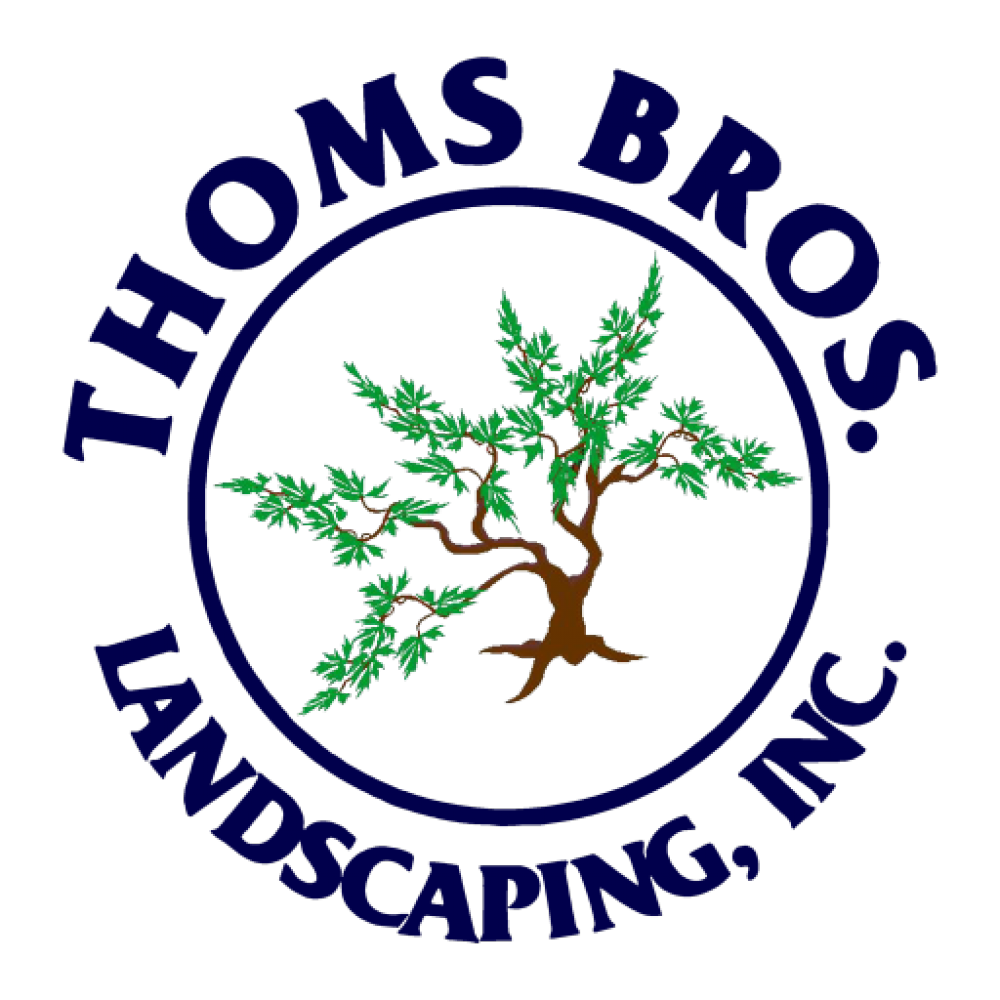The Perennial Plant of the Year® (PPOY) program began in 1990 to showcase a perennial that is a standout among its competitors. Perennials chosen are suitable for a wide range of growing climates, require low maintenance, have multiple-season interest, and are relatively pest/disease-free. If you are looking for an excellent perennial for your next landscape project or something reliable for your gardens, make sure to check out the Perennial Plant of the Year® archive list.

Since the Perennial Plant of the Year® was introduced in 1990, the Perennial Plant Association has received frequent inquiries about how the Perennial Plant of the Year® is selected. The selection process is quite simple – PPA members vote for the Perennial Plant of the Year® each summer. At that time, in addition to the vote, each member may also nominate up to two plants for future consideration. The Perennial Plant of the Year® committee reviews the nominated perennials (more than 400 different perennials are often nominated each year) and selects 3 or 4 perennials to be placed on the ballot.

Nominations generally need to satisfy the following criteria:
- Suitability for a wide range of climatic conditions
- Low-maintenance requirements
- Relative pest- and disease-resistance
- Ready availability in the year of promotion
- Multiple seasons of ornamental interest
This year’s selection is Schizachyrium scoparium and its cultivars which allows regional selections to be selected and promote the cultivars that do best in your location! Summer through fall, the slender leaves and stems of little bluestem are an ever-changing kaleidoscope of gray-green, blue, pink, purple, copper, mahogany, red, and orange tones. Wispy silver-white seed heads sparkle in autumn sunlight and coppery brown leaves persist through winter.
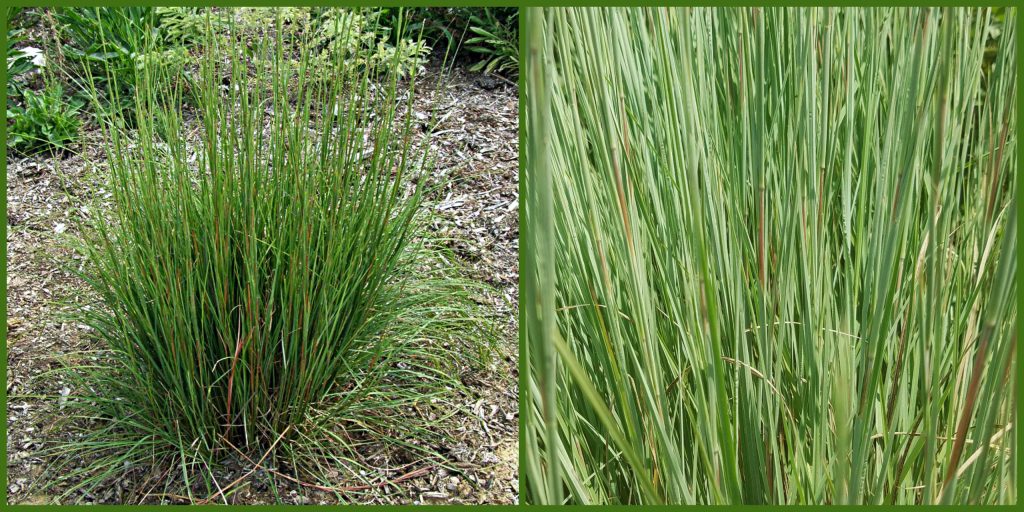
Little bluestem is a tough and dependable clumping grass that blends well with perennials such as asters, sedums, coneflowers, and other grasses. Native grasses play their part in the pollinator story too. Little bluestem is a larval host for a variety of butterflies and moths such as crossline skipper, Dakota skipper, and Ottoe skipper.
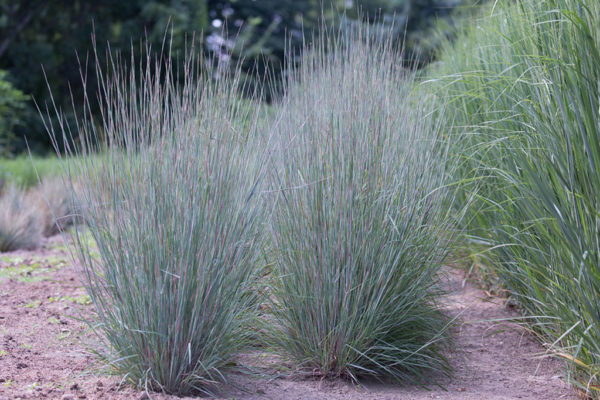
Native to a broad swath of North America, it was one of the dominant grasses of the vast tallgrass prairies. In average to lean, well-drained soils, stems will remain upright but can flop easily if conditions are too rich or moist. Cultivars have been selected for shorter plants, enhanced leaf colors, and stronger stems.
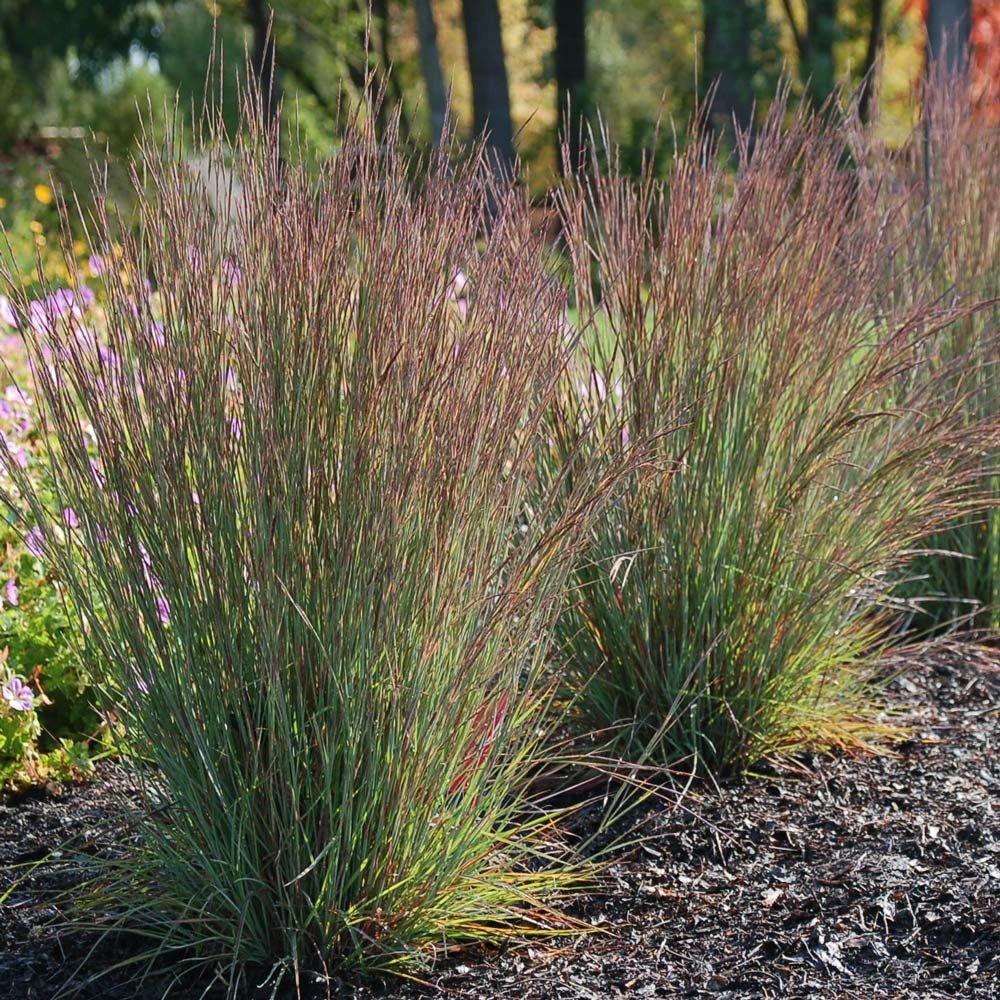
Little bluestem’s spikiness complements native and non-native perennials alike. An easy fit for mass plantings or meadows, it is just as brilliant in traditional borders, gravel gardens, and green roofs. Perfect partners are recent PPOYs such as Calamintha nepeta ssp. nepeta, Asclepias tuberosa, Stachys ‘Hummelo’, and Allium ‘Millenium’.

Twixwood Nursery of Berrien Springs, Michigan has been growing this native and several of its cultivars for years, but they also decided to bring back two discontinued cultivars for this season: Blue Heaven (PP#17,310) and Jazz. They also decided to add a new variety, ‘Chameleon’ (PP#31,339), a Little Bluestem from Hoffman Nursery that was introduced virtually at the MANTS (the Baltimore, MD green industry) show last January and received a lot of attention at Cultivate in July. At the Michigan Nursery and Landscape Association’s show, the Great Lakes Trade Expo (GLTE), Twixwood gave out live plants to all the attendees. I have been thinking about its new location in my yard ever since.
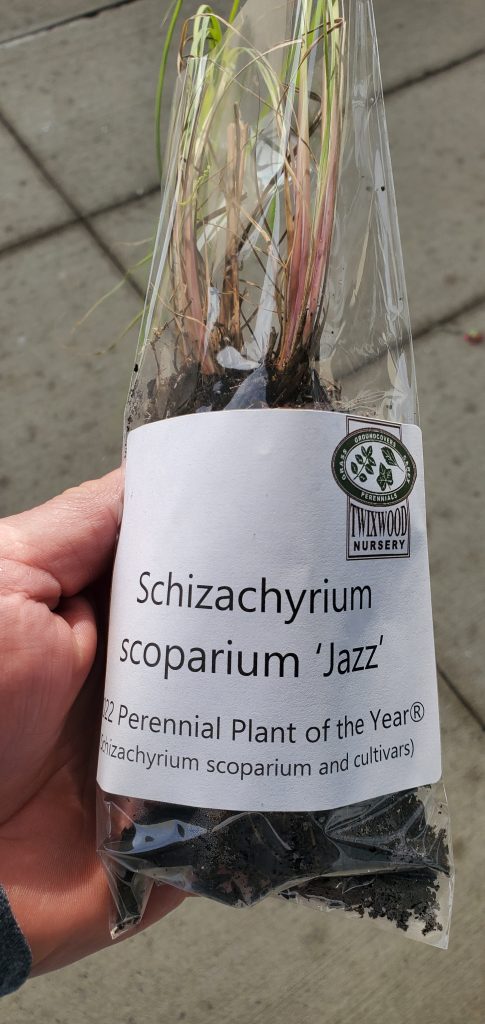
Richard Hawke of the Chicago Botanical Garden selected Schizachyrium scoparium ‘Jazz’ for the Chicago/Central region as his favorite bluestem. “The striking silvery blue leaves of Schizachyrium scoparium ‘Jazz’ are most comparable to ‘The Blues,’ but at 36 inches tall and 30 inches wide, ‘Jazz’ is a foot shorter than ‘The Blues’ and has sturdier stems. ‘Jazz’ was upright at all times including winter during the Chicago Botanic Garden’s trial, whereas ‘The Blues usually flopped early in the summer. The late-season silvery seed heads are followed by a strong purple to deep bronze fall color. ‘Jazz’ was introduced by Brent Horvath at Intrinsic Perennial Gardens in Illinois.”
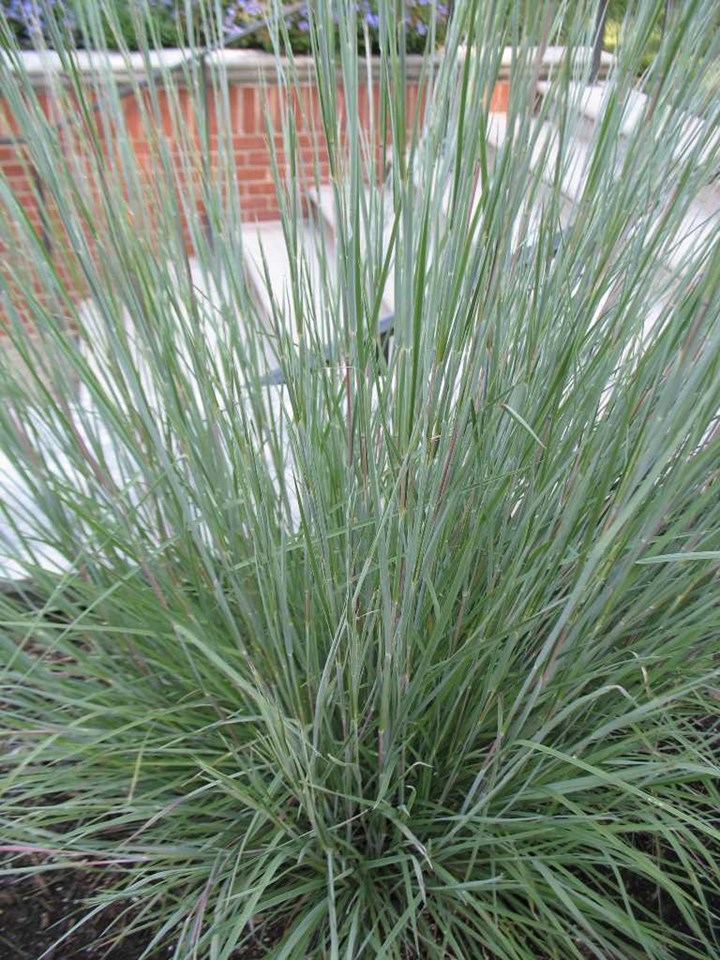
Patty Steinhauser of Stonehouse Nursery chose Schizachyrium scoparium ‘Carousel’ for the Great Lakes region as her favorite bluestem. “This uniquely mounded selection forms a wide clump of blue-green foliage that emerges nearly horizontal and matures into strong, upright stems that remain standing through inclement weather and winter. Takes on pink, copper and orange-red tones in fall topped with tiny seed tufts.”

As a plant lover, avid upland bird hunter, and soon to be conservationists, this year’s selection warms my heart. Although the ring-necked pheasant isn’t a native game bird in America, it sure has found a soft spot in many upland hunters’ hearts including mine and my hunting companion, Jäger, my German Shorthaired Pointer (GSP). Large grasslands habitats is one of three habitats (including shelterbelts and cultivated crop fields) that is required for success of the beautiful game bird. Native grasslands are a mix of big and little bluestem, sideoats grama, switchgrass, tall and intermediate wheat grasses and Indiangrass.
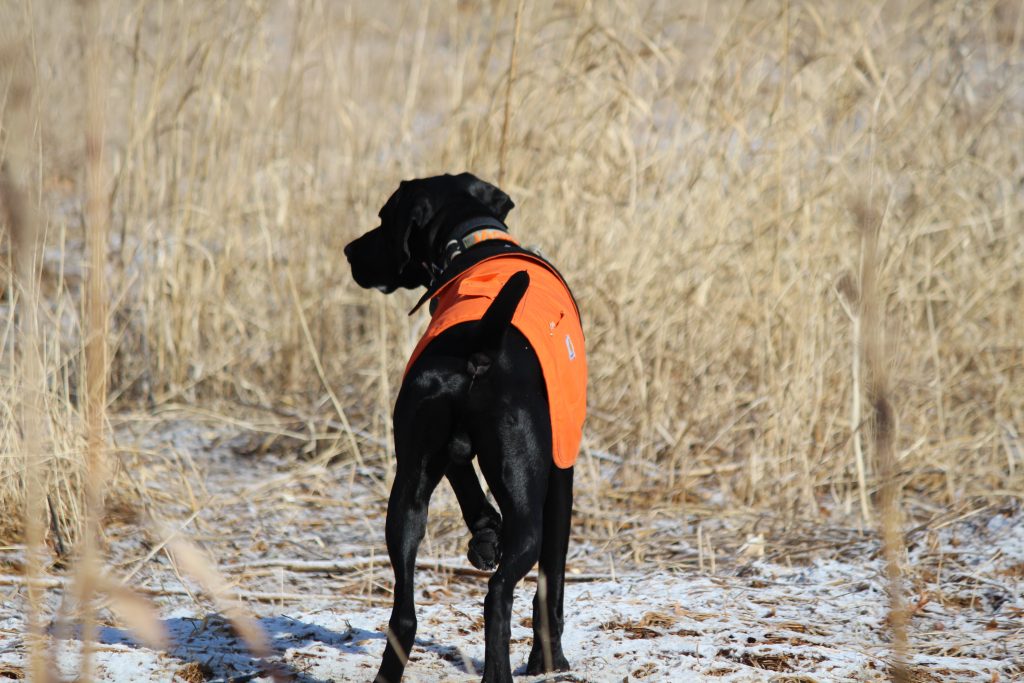
Big bluestem (Andropogon gerardii) is a warm-season perennial that spreads by short rhizomes, creating clumps. Stems may reach 8–9 feet, depending on variety and site conditions. Growth begins in April; however, the majority of growth occurs after June 1. Growing points are close to the ground until late summer (after seedhead has formed) when they are 2–4 inches above ground. Leaves are long, flat and rough along the margins. The ligule is small and membranous; the sheath is somewhat flattened, open and usually hairy. One of the best features used to identify this grass before flowering is the presence of fine silky hairs on the sheath and widely dispersed on the upper leaf surface. The stem is usually purplish at the base and covered with fine hair. The seedhead is two or three distinct racemes on the top of the stem, resembling a turkey’s foot. Awns make the seed appear “hairy.” Big bluestem grows on a wide variety of soils, even on sites with a pH as low as 4.0. Big bluestem is extremely drought-tolerant, with root systems that may grow 12 feet deep.
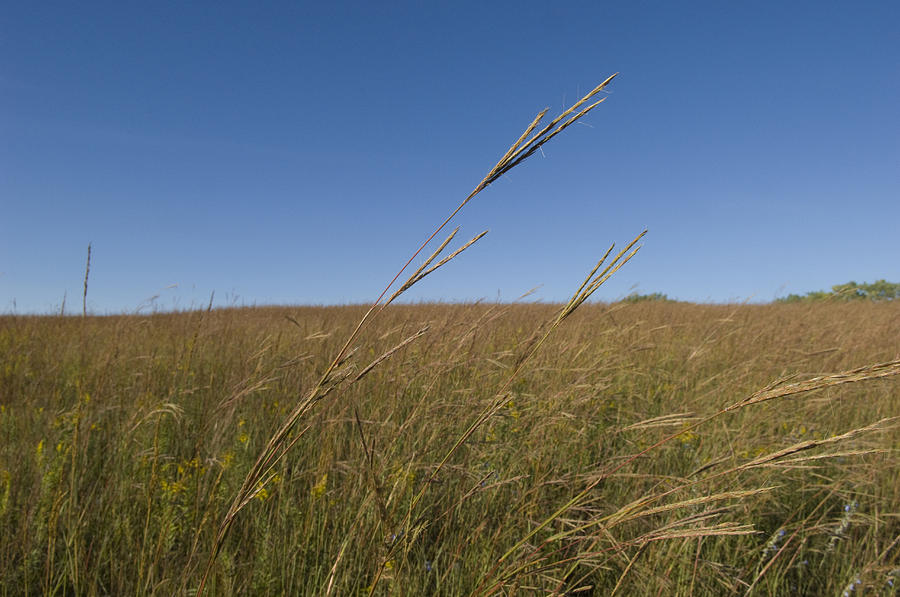
Hardiness: USDA Zones 3 to 9; AHS Heat Zones 7-1.
Light: Full sun
Size: 24-48 inches tall and 18-24 inches wide; cultivar sizes vary
Native Range: Eastern North America Alberta to Quebec south to Arizona and Florida
Soil: Dry to medium, well-drained soils. Adaptable to a range of conditions such as clay and poor soils. Does not like overly wet conditions.
Maintenance: Low-maintenance perennial grass. Cut back in late winter to early spring. Good drought resistance once established, and tolerant of heat and humidity.
Grower Notes
Best in 1-2 gallon pots. A bit slower growing. Once established, grow on the dry side with low to moderate fertilizer rates. Overwinter on the dry side. Overwatering and too much nitrogen can cause floppy growth and increase the probability of rootzone and foliar pathogens. Has few pest issues; scout for aphids and spider mites. The cultivars listed below are vegetatively propagated and patent-protected. The straight species and a few cultivars can be grown from seed.
